Kia ora,
Spring has officially landed! The kōwhai are blooming, the days are stretching longer, and there's a hint of warmth in the air. Spring is here!
Don’t forget, your clocks go forward this Sunday. And because it’s Te Whanganui-a-Tāra, you’ll want to keep both your sunnies and your jacket handy.
In this season of new growth, we’re excited to share some big updates. The Wellington Region CDEM Group has launched its Strategy 2025–2035, which sets out how we’ll work together over the next decade. The strategy puts communities at the heart, to build stronger partnerships, and provide clearer direction. We’ve also refreshed our Community Emergency Hub Guides to make them easier to use, and every Community Response Plan is now online. Read the newsletter below for further detail.
With the warmer weather ahead, you’ll see more activities and workshops popping up across the region.
Keep an eye on our events page for opportunities near you – we’d love to see you there!
Let's Get Emergency Water Storage Ready
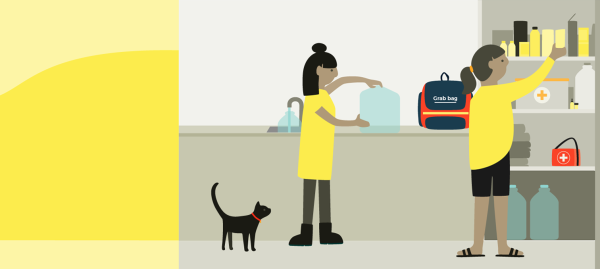
This spring we are encouraging Wellingtonians to get Emergency Water Storage ready.
Emergency water is the single best thing you can store to be more prepared for an earthquake. But it’s not just earthquakes that can disrupt our water supply! Floods, network disruptions and droughts can affect our ability to get clean drinking water out of the tap.
Our recommendation is for households to store 140L per person. This is enough water to last each person for seven days.
This amount gives you enough for drinking, cooking, hand washing, looking after pets, having a sponge bath, washing dishes, brushing teeth, handwashing clothes, and first aid.
Here are a few of our Top Emergency Water Tips:
1. Clean and re-use plastic bottles (we don’t recommend reusing milk bottles, as milk residue will contaminate the water!)
2. Clean and re-use plastic ice cream containers and storing them in the freezer.
3. Fill large containers available from hardware stores
4. Purchase a 200L water tank through your local council.
Learn more about emergency water storage
ShakeOut is coming!

Mark your calendars and join thousands across Aotearoa at 9:30am on Thursday 16 October as we Drop, Cover, and Hold together!
You’ve done this before, so you know the drill. Sign up, set up a plan to practise at your home, school or workplace, then just Drop, Cover, and Hold for 60 seconds. If you’re in a tsunami zone, it’s the perfect chance to practise your evacuation hīkoi too.
Registration takes less than two minutes - faster than making a cuppa - and it could save lives.
Encourage your whānau, communities, schools and organisations to join in.
You can also use these images, videos and resources to promote and share about Shakeout. For those working with schools, you can learn more about this year's Get Ready Schools Challenge here.
Celebrate ShakeOut with a Reunification Drill
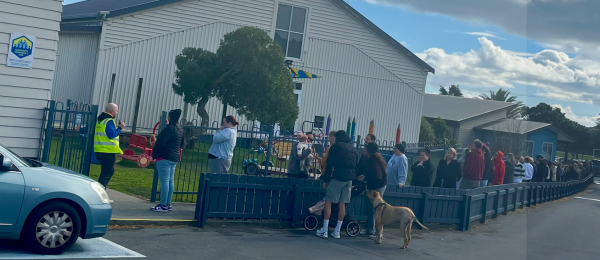 Congratulations to Tītahi Bay School for a smooth reunification drill. This is a practise drill which can help children reunite with their parents or trusted caregivers safely during an emergency.
Congratulations to Tītahi Bay School for a smooth reunification drill. This is a practise drill which can help children reunite with their parents or trusted caregivers safely during an emergency.
ShakeOut 2025 is the perfect opportunity to encourage your school to host a reunification drill! Gather your whānau and practise who would collect your children if school or preschool needed to close its doors unexpectedly.
You can include your relatives, older siblings, or your friends’ parents— anyone that you and your children know and trust.
These drills don’t take long and they make a big difference. They help everyone to know what to do, they build confidence, and they help make our communities safer. Practise, check your plan, and talk it through with your whānau—because being prepared is a gift everyone can share.
Your Community, Your Plan
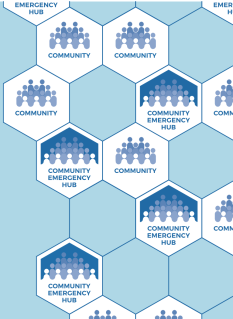 When disaster strikes, it’s our neighbourhood connections that matter most. That’s why we’ve refreshed our Community Emergency Hub Guides. We have worked to make them clearer and easier for everyone to use.
When disaster strikes, it’s our neighbourhood connections that matter most. That’s why we’ve refreshed our Community Emergency Hub Guides. We have worked to make them clearer and easier for everyone to use.
You can now find every one of our 120+ Community Response Plans online, right alongside our updated Regional Hub Guide. Whether it’s a big shake, a severe storm, or something else unexpected, you can read about how your community can come together.
Knowing your Hub’s details is a small step toward community preparedness and can make a big difference. The more we know now in peacetime, the more prepared we’ll be together in an emergency.
Check out your plan on our interactive map or search your area here.
CDEM Group Strategy 2025-2035
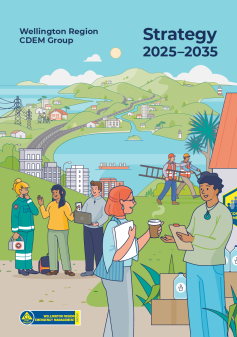 We're excited to announce that the Wellington Region Civil Defence Emergency Management (CDEM) Group has launched a 2025-2035 strategy! Over the next 10 years, we’re focused on system transformation - clearer direction, stronger governance and partnerships, and communities at the heart of everything we do.
We're excited to announce that the Wellington Region Civil Defence Emergency Management (CDEM) Group has launched a 2025-2035 strategy! Over the next 10 years, we’re focused on system transformation - clearer direction, stronger governance and partnerships, and communities at the heart of everything we do.
What does this look like?
- Our communities are centred at every stage of emergency management - whether we are building resilience before a disaster, or working together during and after a disaster.
- Te Tiriti o Waitangi, mātauranga Māori, and iwi/Māori leadership are embedded into every part of the emergency management system.
- Radical collaboration with the CDEM Group partners to break down silos and achieve better outcomes.
- Goals that are grounded in equity, trust, and shared responsibility
- We change, improve and adapt as we face escalating threats and changes to our region's hazardscape.
- Governance and leadership are aligned and accountable across all councils and partner agencies in the Group.
Flick through our strategy here!
Read, Watch & Understand
Tinā – A Celebration of Strength
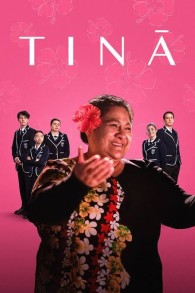 Tinā, a powerful new Pacific film rooted in Aotearoa, is now available on streaming services. This heartfelt story honours the strength, resilience, and aroha of Pacific women, especially mothers as they navigate the everyday and the unexpected.
Tinā, a powerful new Pacific film rooted in Aotearoa, is now available on streaming services. This heartfelt story honours the strength, resilience, and aroha of Pacific women, especially mothers as they navigate the everyday and the unexpected.
Grounded in culture, faith, and family, Tinā is a moving reminder of the quiet leadership that holds our communities together. In our line of work, we often see how vital those community ties are — the way people look after one another, lead with care, and rise in times of challenge. Tinā captures that spirit beautifully.
If you're looking for something meaningful to watch, we encourage you to make time for this one — and share it with your loved ones but be warned, you will need a box of tissues!
Find out where you can stream Tinā
Supporting Our Marae: Frontline Centres of Resilience
Marae have always been places of manaakitanga and connection and in times of disaster, they often become the beating heart of community response.
New research by PhD student Haukapuanui Vercoe shines a spotlight on this vital role. His award-winning study, Adaptations of Marae for Natural Hazards Resilience, combines geospatial science with Mātauranga Māori to look at 835 marae across the motu. One striking finding: two-thirds of marae are exposed to at least one hazard, such as earthquakes or floods.
Right here in the Wellington region, Porirua’s Takapūwāhia community (Ngāti Toa Rangatira) teamed up with GNS scientists (now Earth Sciences) through the It’s Our Fault programme to map their exposure to natural hazards. Callum Kātene, Chair of Takapūwāhia Marae Board, says that blending Mātauranga Māori with science empowers the community to lead themselves in a crisis and make decisions that keep people safe.
Marae continue to stand strong as centres of resilience.
Nationally, Haukapuanui Vercoe hopes his work will lead to greater investment in marae infrastructure and climate resilience, ensuring they can keep supporting their people and the wider community when it matters most.
It’s a powerful reminder that when we strengthen marae, we strengthen us all.
Read more about Haukapuanui's research here
Events and Workshops
WREMO holds and supports a number of community events and workshops around the region.
Check out our calendar of events page by clicking here!